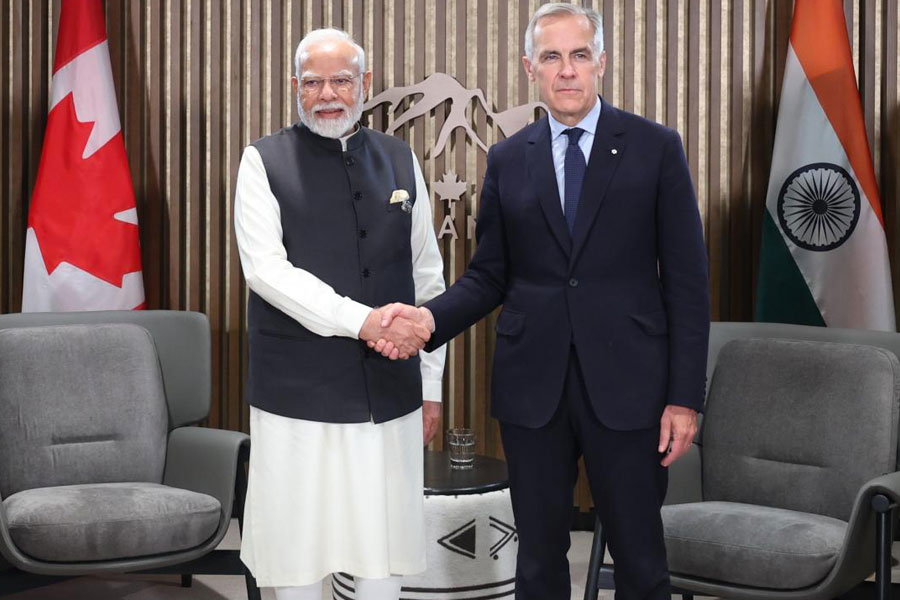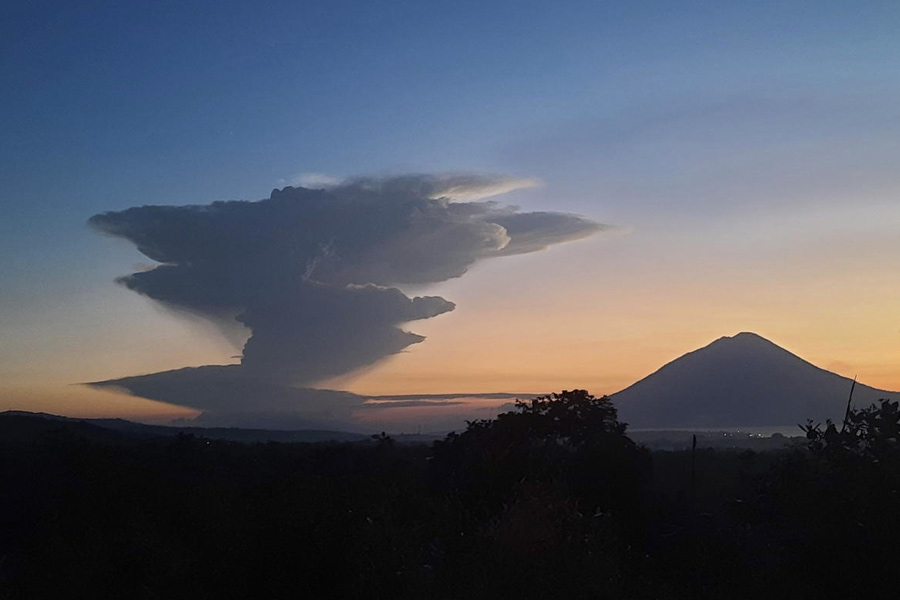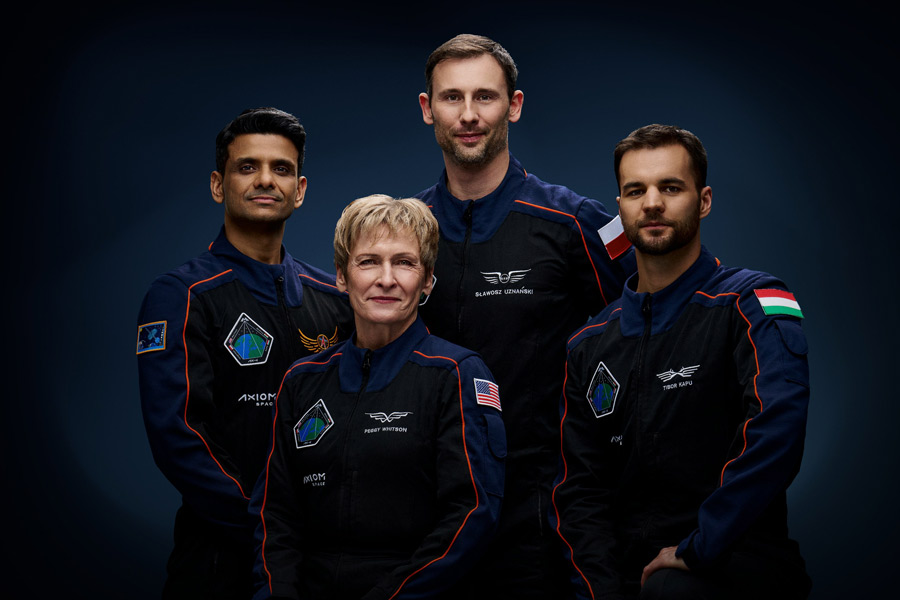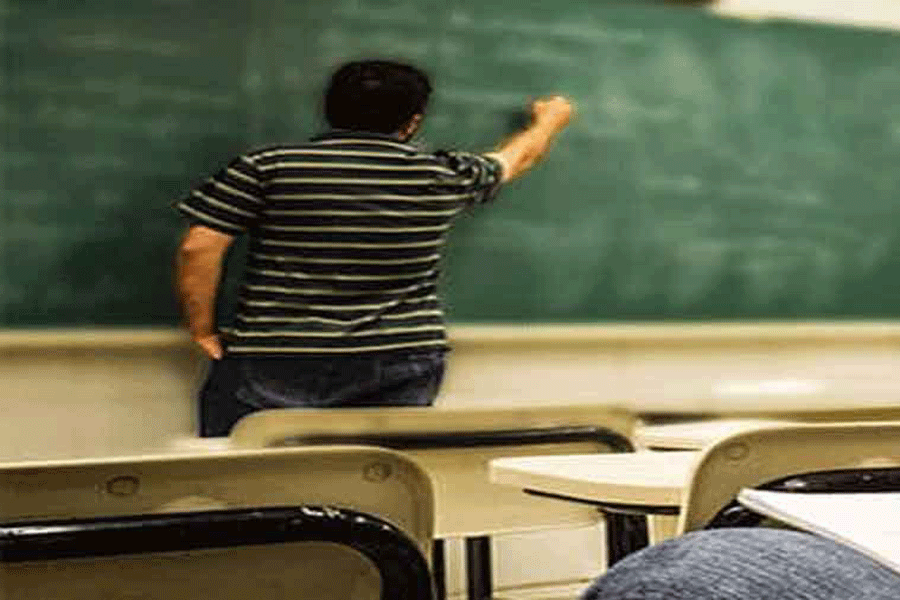 |
| Avik Mukhopadhyay |
Avikda, name a recent film that you’ve enjoyed...
Well, it’s not a very recent film but I watched it recently — Bela Tarr’s Satantango (1994). People say his movies are boring but I am fond of them. It takes a lot of effort and grit to create a film like this. It’s a little more than seven hours long, a black-and-white film… I spent a whole day watching it.
You have shot 30 films in 15 years. How did it all begin?
In Durgapur, where I am from, during every Durga Puja we used to have film shows on the puja ground. A huge white screen would be erected and a projector would run. An old-world kind of an experience. More than the film that was being screened, my interest was in the projection system… how a roll of film through light produced a movement on the huge screen. That used to intrigue me. I used to open up all sorts of things at home, trying to build a projector machine for myself! So, my interest in cinema was because of its technology. Form, content, language of film came in much later.
 |
Any film that impacted you in your childhood?
The Durgapur Film Society was quite active those days. Baba was associated with it. I must have watched a lot of Godard and Fellini and Antonioni, but the one that caught my imagination was (Satyajit Ray’s) Aparajito... probably because of the story… of this young boy from the village coming to the city for the first time… perhaps one identified with it… I also felt that the film was quite different from the rest that I had seen….
You were studying chemistry in Calcutta for your graduation. How did the city contribute to your journey?
I met a lot of people here, made a lot of friends. I used to pursue still photography quite diligently. And by the time I went into the second year of my graduation, I knew I wanted to get into films.
So it must have been heavenly at FTII then? Being surrounded by Tarkovsky, Bergman and Kurosawa....
We were actually bombarded with films day in and day out. If one day you fell in love with American Independent cinema, the next day you rooted for the New Wave, and the day after you decided you got to make films only the Tarkovsky way! That was the fun at FTII. It didn’t give you the chance to decide. You just had to keep your mind open, keep absorbing and you developed a language of your own as you grew up.
Any film that comes to mind when you think of those years at FTII?
Touch of Evil (Orson Welles), because of its opening sequence. It’s a long take, with a brilliant mise-en-scene. The tracking camera, the crane shot, the building up of tension before the blast. That too in those years when the camera device was big and cumbersome!
Interestingly, Touch of Evil was intended to be Welles’ return to mainstream Hollywood filmmaking...
There is this widespread notion that the so-called arthouse films can be created quite easily. One needs to watch Tarkovsky’s Andrei Rublev (1966) to understand how much effort is needed even in that space. The amount of detailing that had gone into each and every aspect of the making, especially in the action sequences, in the scenes where the Tartars invade the villages… all that effort was a hundred times more than what is seen even today in a so-called mainstream film.
You seem to be deeply influenced by Tarkovsky...
Yes, I am. His cinematographer Vadim Ivanovich Yusov is a favourite of mine. And then there was Bergman.
What about American cinema? Outside Hollywood?
The one film that I liked was Easy Rider (1969). It was responsible for kick-starting the American Independent cinema and showed that films outside of the studio format were a possibility. Taxi Driver (1976) is another case in point. Also, German cinema. I was inspired by (Werner) Herzog for his cinematic expression. A favourite film of his would be Aguirre, the Wrath of God (1972). We were all in awe of him. There was a madness that we could relate to.
If you were to name one cinematographer you revere, who would it be?
(Thinks) Vittorio Storaro. The first film that I watched of his was The Conformist (1970). This was a transition period from B&W to colour. He had shot it almost like a B&W film — high contrast, patterns…. There was a shot toward the end of the film — of a murder in a storm, a highly charged and energetic shot. Later, in an interview he said that he could not see what he was shooting with his Arri 2C. He doubted if anything was printable at all! I was moved by what he went on to say… that ‘if you can feel the sequence, probably you need not see everything that you shoot.’
Very interesting thought...
This thought process is also there in Tarantino’s films. I quite liked Django Unchained. There is a good amount of intertextuality in his films. He makes cinema on cinema! The plot, the visuals are not so important to him. He is delightfully self-indulgent, almost childlike in his obsession, but places everything so well. There is an element of fun. You even enjoy the violence. Not easy to accomplish.... Robert Richardson is another favourite cinematographer. I liked Shutter Island very much.
From FTII to the hard reality when you started out looking for work — how difficult was it?
It was both our good luck and bad luck that not too many good films were happening when I came back to Calcutta. There was a lone voice or two who kept at it. Rinadi (Aparna Sen) was there already. Then Rituparno (Ghosh) got into films. One of my friends from the ad world, Abhijit Chaudhuri, and I, we got together and made a film….
Yes, Patalghar...
Dadu (Abhijit) wanted to mount the film differently. We both had liked Delicatessen (by Marc Caro, Jean-Pierre Jeunet) and thought we could use it as a reference point for Patalghar. There was not so much amalgamation between the digital and the analog formats back then. We used a special processing technique to achieve a certain look, called the silver retention process. The same technique was used in Chokher Bali. I felt that the extra colour should be washed out in Chokher Bali. I feel with these two films, given the kind of infrastructure we had, there was an interesting experimentation with the look of the films.
Which other Indian cinematographers, you think, are doing good work?
Santosh (Sivan) and (K.U.) Mohanan, they are doing a good job in the space they are working in. Much better stuff happens in the Tamil and Malayalam film industries. I mention Mohanan and Santosh also because they are serious about cinema. They watch and discuss films, they are constantly alive to cinema.
Any recent Bangla film that you watched and liked?
Tasher Desh, I would say, tried to experiment with the form and content. At least someone has tried to do something different.
You don’t seem quite excited about the present state of Bangla cinema...
Something alarming is happening. Average fare is being dished out and the audience is being told that these are good films. There is a facade of seriousness around these films but they are actually very average.
So what’s the solution?
This celebration of mediocrity should stop. More and more experiments should be carried out.
Asukh was your debut film and your first collaboration with Rituparno Ghosh. Do you miss him?
Rituparno’s absence will be gradually felt by the Bengali audience. One may agree or disagree with the politics of his films, but he had his own signature. That is not easy to achieve. These days every other film looks the same. But you watch his films, just a frame or a couple of shots, and you know it’s a Rituparno Ghosh film. He would take personal care in each and every department. So sincere, devoted….
Your plans for the future...?
I am working on a few projects with Madhuja Mukherjee. She’s good at penning ideas, while I am not. These are independent projects. Last year, we made a film called Carnival that premiered at the Rotterdam Film Festival. We’re trying to do something in that space. Let’s see.










